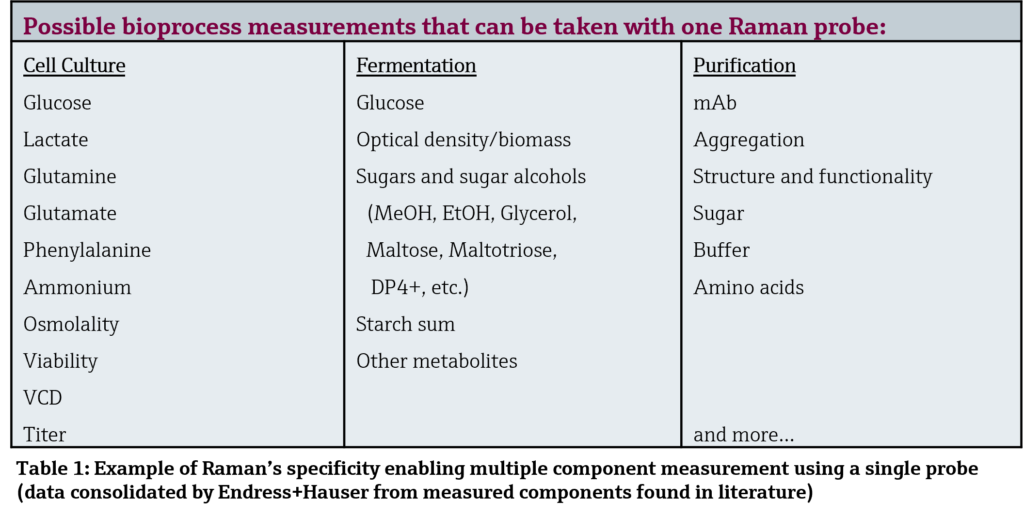Q&A: Temperature transmitters enhance accuracy, safety and cost effectiveness
Greg Pryor is the Temperature Product Marketing Manager at Endress+Hauser USA. To help answer some questions surrounding temperature transmitters, we […]
Raman technology may not be the newest kid on the block anymore, but the technology still has an air of mystery around it. In this introduction to Raman spectroscopy, we’ll clear up some of the questions surrounding the technology, starting with the basics.
Raman spectroscopy is a measurement technique that uses visible or near-infrared light to measure chemical composition. It’s often used in many industries to help measure, control, and understand chemistry. In the laboratory, it can be used for quality assurance, R&D, or process development purposes. In the process environment, 24/7 automated Raman-based monitoring and control improves:
Raman spectroscopy uses light scattering to act as a powerful detective in the analysis of chemical composition. As visible or near-infrared light interacts with molecular vibrations, the light becomes scattered and can lose a little bit of energy (causing an increase in the light’s wavelength). The changes of wavelength are very specific to a molecular vibration and when those changes in wavelength are plotted as a spectrum, you can see a “molecular fingerprint” that can be used to identify, quantify, and monitor chemical composition in a lab or process environment.
The specificity of Raman spectroscopy enables transfer of analytical models from the laboratory to the process environment without significant model rework. It is now an established lab-to-process analysis tool with proven benefits.
This video breaks it down even further. Take a look!
While Raman spectroscopy has been used for measurements in laboratory academic settings for decades, it wasn’t until the mid-to-late 1990s that instrumentation became more user-friendly. This improvement, along with other technological advances, enabled the use of Raman across a wider range of industrial applications.
Because of its valuable measurement capabilities, the use of Raman can be found across many applications in laboratory, portable, industrial, environmental, and clinical research settings today. In fact, Raman’s specificity enables the measurement of multiple components using a single fiber optic probe.

Greg Pryor is the Temperature Product Marketing Manager at Endress+Hauser USA. To help answer some questions surrounding temperature transmitters, we […]
In today’s world, ensuring clean and safe water is more critical than ever. This Q&A with Endress+Hauser’s Liquid Analysis Product […]
When it comes to finding the right level technology for the specific needs within your industry, it can be a […]
Comments
Hi there, just wanted to say, I enjoyed this blog post.
It was helpful. Keep on posting!